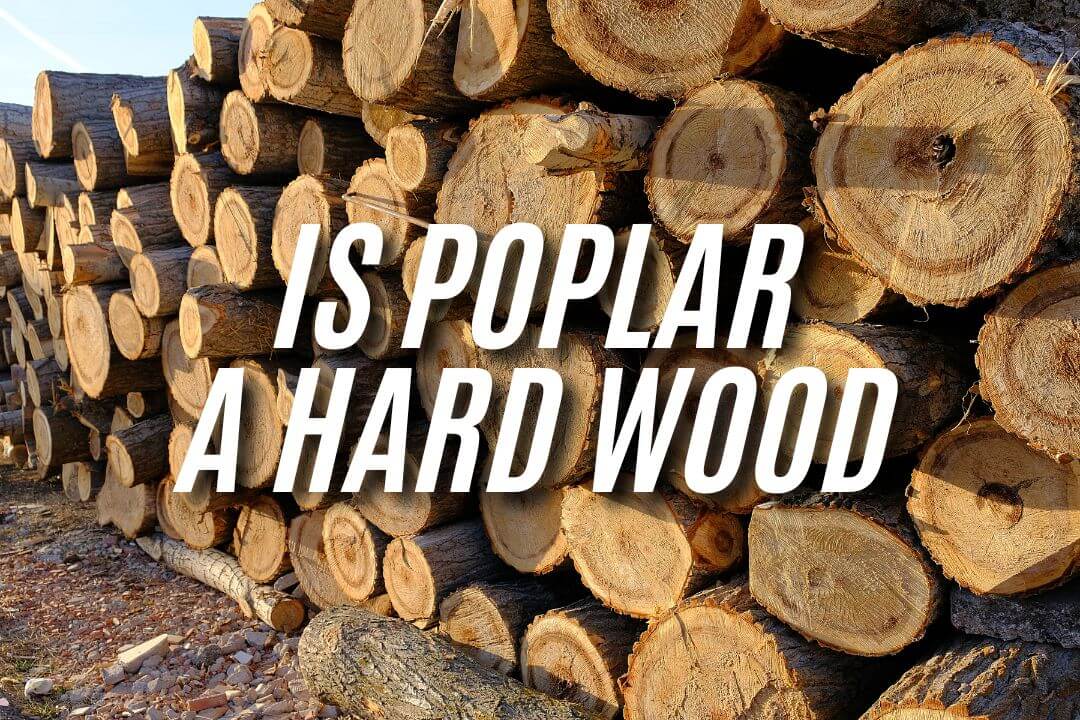
Is Poplar a hardwood? In woodworking and furniture making, the type of wood matters. It impacts the quality of the final product. It also affects its durability and appearance. One common question in this context is whether poplar is a hardwood. This article explores the features of poplar wood. It covers its classification and uses. This gives a clear view of its role in the wood industry.
Table of Contents
Understanding Wood Classification
Wood is generally classified into two categories: hardwood and softwood. This classification does not depend on how hard the wood is. Instead, it is based on the plant traits of the trees that produce the wood.
- Hardwoods come from angiosperm trees, which have broad leaves and produce seeds enclosed in fruits. Examples include oak, maple, and cherry.
- Softwoods come from gymnosperm trees, which usually have needles and produce seeds in cones. Examples include pine, spruce, and cedar.
Is Poplar a Hardwood?
Many people wonder, is poplar a hardwood? The answer is yes. Poplar is classified as a hardwood because it comes from a deciduous tree, specifically from the genus Populus. Despite its classification, poplar is often softer than many other hardwoods, which can lead to some confusion.
According to the Janka hardness test, this test measures how well wood resists dents and wear. Poplar has a rating of about 540 lbf (pounds-force). This is relatively low compared to other hardwoods like oak, which has a Janka rating of about 1,290 lbf. This lower hardness makes poplar easier to work with, but it also means it may not be as durable as harder woods.
Characteristics of Poplar Wood

Poplar wood is known for several distinct characteristics that make it a popular choice in various applications:
- Lightweight and Soft: Poplar is lighter and softer than many other hardwoods, making it easy to cut, shape, and sand.
- Uniform Texture: It has a fine, even texture that takes paint and stains well, although it may require a primer to achieve a smooth finish.
- Cost-Effective: Poplar is generally more affordable than other hardwoods, making it a cost-effective option for many projects.
- Environmentally Friendly: Poplar trees grow quickly and are often sustainably harvested, making them an environmentally friendly choice.
Applications of Poplar Wood
Due to its unique properties, poplar wood is used in a variety of applications:
- Furniture Making: Poplar is often used for furniture frames and components that will be painted or veneered.
- Cabinetry: Its smooth surface makes it ideal for painted cabinets and interior trim.
- Crafts and Hobbies: The ease of working with Poplar makes it a favorite among hobbyists and crafters.
- Musical Instruments: Poplar is sometimes used in the construction of musical instruments, such as the bodies of electric guitars.
Case Study: Poplar in Furniture Manufacturing
A study by a leading furniture maker found something interesting. Using poplar wood for the inside parts of upholstered furniture reduced production costs. The savings were about 15%. This change did not lower the quality. The study highlighted Poplar’s workability and cost-effectiveness as key factors in its selection.
Conclusion
Is poplar a hardwood? In conclusion, while poplar is classified as a hardwood, its physical properties set it apart from many other hardwoods. Its softness, ease of use, and low cost make it a great choice for many uses, like furniture and crafts. Knowing the features and uses of poplar can help woodworkers and buyers decide if it is right for their projects.
Ultimately, whether Poplar is the right choice depends on the specific requirements of the project at hand. Its unique combination of features makes it a valuable resource in the world of woodworking.
FAQS
Why is poplar called a hardwood if it’s so soft?
Hardwood and softwood classifications are based on the type of tree, not the hardness of the wood itself. Hardwoods come from deciduous trees, while softwoods come from conifers. Poplar is a hardwood because it comes from a deciduous tree, but it is softer than most hardwoods.
How hard is poplar compared to other hardwoods?
On the Janka hardness scale, poplar rates about 540 lbf (pounds-force). This is much lower than other hardwoods like oak (1,290 lbf) or maple (1,450 lbf). This lower hardness makes it easier to cut, sand, and shape.
Is poplar good for outdoor use?
No, poplar is not recommended for outdoor use unless it is properly treated. It is not naturally rot-resistant and is prone to moisture absorption, which can lead to warping, cracking, or decay. If you must use it outdoors, you should seal, paint, or treat it to protect it from the elements.
Is poplar a hardwood or a softwood?
Poplar is a hardwood. It comes from a deciduous tree that loses its leaves each year. This tree belongs to the Populus genus. However, it is softer than most traditional hardwoods, leading to some confusion.





